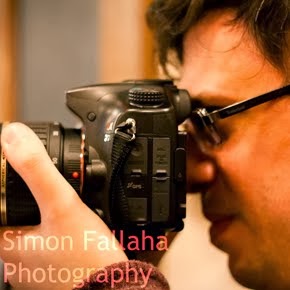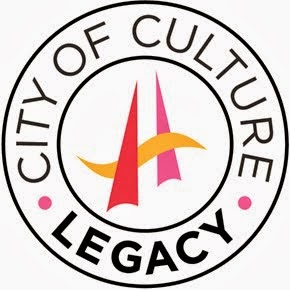Violinist Dmitry Sitkovetsky and pianist Cathal Breslin bring the curtain down on the Walled City Music Festival in "Euroclectic" fashion
A mixture of Beethoven, Kreisler, Prokofiev, Bartok and Ravel await everyone who attends this, the final night of Derry-Londonderry's Walled City Music Festival. Having been treated to a week's worth of strong chamber music and a few days of exceptionally hot weather, the chattering, comfortable, classically minded audience in the University Of Ulster at Magee's Great Hall eagerly anticipate the richest of icings on a well-baked orchestral cake.
The possibilities are mouthwatering. Our violinist for the evening is one of the world's leading violin soloists, Dmitry Sitkovetsky. The former principal conductor of the Ulster Orchestra, Sitkovetsky is joined by the equally world-renowned Cathal Breslin, a pianist who has performed for presidents and kings and sold out Carnegie Hall twice.
Sitkovetsky and Breslin begin with the first of Beethoven's Op. 30 Sonatas, cast in three movements. The first, Allegro, sees alternation between delicate strings and kinetic, variable piano-playing over a range of octaves, cumulating in an always active and sometimes striking sound. Attention to detail is strong and focus is paramount.
While Breslin maintains a professional pose, Sitkovetsky's eyes periodically widen and close. The violinist's lips pucker and quiver amidst a handful of fearful expressions in a triumphant battle with surging strings and cascading chords.
Well into the second movement, it becomes apparent that Sitkovetsky's face is always in tandem with the mood of the music. If a note or bar causes discomfort, it is obvious, though the power of his string-playing overcomes this, silencing performer and audience into simultaneous concentration and appreciation.
The tempo raises for the third movement, the first "foot tapper" of the evening, where Breslin marks his territory. The pianist's adaptability, reflexes, sharpness and pitch are significant. Memorably, Breslin's playing slows to a repetitive gallop, nearly dying out to silence before re-emerging as a steady background to a prominent violin. It's like a pre-emptive musical strike before the final, inter-lapping, string-based hit.
To Sitkovetsky, tonight is a "very different" recital with lots of smaller pieces in between the larger ones. A meal of not only main courses, but also middle courses, hors d'ouevres, and so on.
So it is with Kreisler's Rondino, Liebeslied and Liebesfreud. A pleasingly simple melodic overlap guides us down an unpredictable sonic stream on the way to an exhibitionist tango rhythm dominated by Sitkovetsky, who later lowers his tone, allowing the unselfish Breslin to fully impress. Both artists' breathing is extremely audible during a high powered refrain which ascends to deserved applause.
Lotus Land, co-composed by Kreisler and Cyril Scott, is intended to be the epitome of exotic transportation. Shut your eyes and you could imagine a beautiful sunset exploding into life before slowly going down, cataloguing the allure and alienation of foreign surroundings. The sweetly entrancing melancholia of the piece establishes this.
By contrast, Brahms' Hungarian Dances bring us back to earth in a way, establishing the aura of an Eastern European ballroom. It's reached the stage where the power of the music seems to have overtaken the power of the performance, but the mildly enraptured audience don't seem to mind.
Post-interval, Sitkovetsky and Breslin treat us to Prokofiev's Cinderella dances. By Sitkovetsky's own admission, these pieces are not made for violin and piano, but the orchestrations are no less determined. What our performers provide is something more delicate and relaxed, beginning with the crisp, medieval and sometimes dingy Valse waltz. Winter Fairy delivers a series of flowing scales on a bed of strings backed up by Breslin's gentle rummaging of the keys: a gently complimentary lead into the initially thunderous Mazurka, which sees Sitkovetsky and Breslin interlock like two equally concentrated ballet dancers jostling for command.
Themes of patriarchy, jollity, grim romance and reflective sentiment from a trapped viewpoint surface in Bartok's Romanian Folk Dances. These collide into an Eastern European polka that tests how quickly the musicians can play. The answer is, very quickly indeed.
The concert finishes as it begins, with a Sonata: this time the composer is Maurice Ravel. Allegretto invites a sweet, quietly enlightening piano harmony from Breslin, restrainedly backed up by a soundly rhythmic Sitkovetsky.
Less soothing, but more interesting, is the experimental Blues, an attempt to make the violin and piano sound like the saxophone and guitar. It's more casual jazz than traditionally upbeat jazz, but with their instruments, Sitkovetsky and Breslin create hitherto unforeseen, hyper-stylised richness. The application trumps the tune itself: American inspiration, but European Eclecticism. Euroclecticism, perhaps.
As the players approach their final, criss-crossing, complex movement, clouds visibly multiply on the other side of the Great Hall's windows, foreshadowing the stormy gloom embodied in the darkest recesses of their collection of pieces. But one is also stirred by elements inside and outside, the return to traditional "Derry weather" neatly tying in with the comforting normalcy that follows a refreshingly unorthodox journey, musical or otherwise. A journey made thoroughly worthwhile by the enlightening, eclectic - or should that be "euroclectic"? - endeavour of Sitkovetsky, Breslin and every other artist at this year's Walled City Music Festival.



















